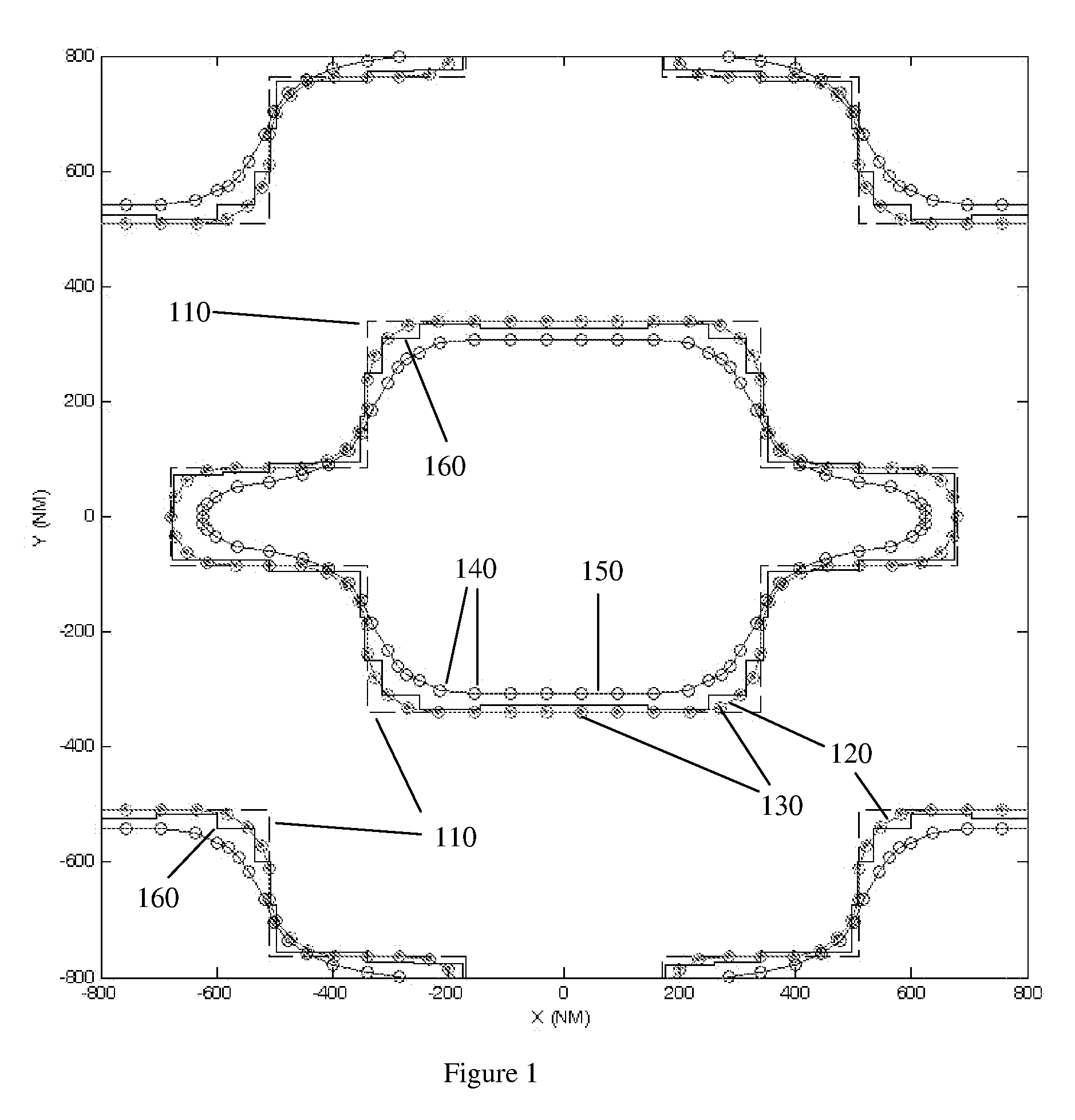Method of verifying photomask data based on models of etch and lithography processes
a technology of etching and lithography, applied in the field of optical lithography, can solve the problems that the opc algorithm has not always met this goal, and the verification has been performed using an optical model
- Summary
- Abstract
- Description
- Claims
- Application Information
AI Technical Summary
Problems solved by technology
Method used
Image
Examples
Embodiment Construction
[0036]Photolithography transfers pattern(s) from one or more photomasks to a photoresist film coated on a semiconductor wafer. The pattern that is formed in photoresist acts as a mask, or a stencil, during a subsequent etching process. Critical features of integrated circuits are usually etched by so called plasma-etch or dry-etch processes. The dimensions of a feature in photoresist are different from the dimensions of the same feature, etched into a layer on the wafer. This difference between an etched dimension and the corresponding resist dimension is called: etch-bias or etch-skew. The etch-bias depends on the local details of the pattern and on the surrounding pattern density. In other words, the etch bias depends on some aspects of the pattern that is being etched. To be valid, verification has to account for the etch bias. For this purpose, we introduce the concepts of etch-target and litho-target.
[0037]Etch-target is a set of polygons or a set of curves that describe the de...
PUM
 Login to View More
Login to View More Abstract
Description
Claims
Application Information
 Login to View More
Login to View More - R&D Engineer
- R&D Manager
- IP Professional
- Industry Leading Data Capabilities
- Powerful AI technology
- Patent DNA Extraction
Browse by: Latest US Patents, China's latest patents, Technical Efficacy Thesaurus, Application Domain, Technology Topic, Popular Technical Reports.
© 2024 PatSnap. All rights reserved.Legal|Privacy policy|Modern Slavery Act Transparency Statement|Sitemap|About US| Contact US: help@patsnap.com










